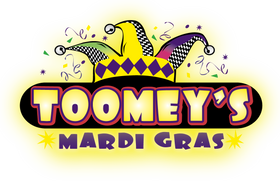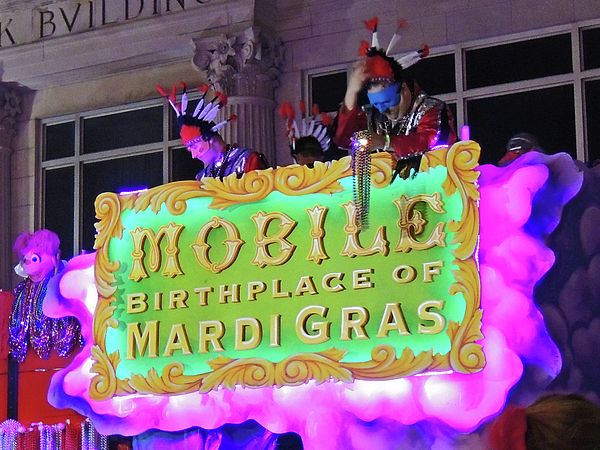If you think Mardi Gras originated in New Orleans, you’ve almost certainly never met a Mobilian.
Once French settlers made their way to Mobile at the turn of the 18th century, along with them came the observance of Mardi Gras in 1703 – roughly 15 years before New Orleans was even founded. In fact, Mobile’s Boeuf Gras Society (est. 1710) held the earliest known North American parade in 1711, which featured a massive paper-mache bull’s head on wheels floating its way down Dauphin Street.
Meanwhile, although Mardi Gras was common in the Big Easy by the 1730’s, New Orleans’ first parade didn’t take place for more than a hundred years (1857).
On New Year’s Eve in 1831, the Cowbellian de Rakin Society formed the first masked parading organization in America after a cotton broker named Michael Krafft gathered his friends for an impromptu parade through downtown Mobile wielding cowbells, rakes and other farming tools in celebration of the coming year. By 1840, the Cowbellians held an annual, themed parade which ultimately debuted horse-drawn floats at their ‘Heathen Gods and Goddesses’ installment.
However, this society consisted of only high-class young men, who excluded what they considered any “non-professional” members, leading to cotton warehouse workers creating the Striker’s Independent Society in 1841 – the country’s oldest remaining mystic society.
The Civil War caused Mardi Gras activities to take a brief hiatus (1862-1865), that is until Joseph Stillwell Cain Jr., better known as Joe Cain, brought about carnival’s revival as he transformed into “Old Slacabamorinico” (*the fictional chief of the Chickasaw Indians*) in 1868 and directed the Lost Cause Minstrels in a procession meant to insult the Union troops still occupying Mobile. While societies like the Cowbellians and Striker’s continued to parade on New Year’s Eve, Cain’s efforts largely helped move Mobile’s festivities to our modern Fat Tuesday tradition.
Over the next century, Mobile saw the development of Order of Myths (1867), Infant Mystics (1868), First Royal Court (1872), Knights of Revelry (1874), Comic Cowboys of Wragg Swamp (1884), Continental Mystic Crew (1890), Order of Doves (1894), Mobile Area Mardi Gras Association (1939), etc. – and it wasn’t until the early 1960’s that the port city’s beloved moonpie (*two round graham crackers separated by marshmallow filling, dipped in a flavored coating*) became a staple of Mardi Gras by way of the famous Chattanooga Bakery, as organizations started to look for something softer to throw than the typical Cracker Jack boxes.
Worth noting as well, the Infant Mystics not only introduced electric floats to Mobile (1929) but also threw the first doubloon two years before their 100th anniversary (1965).
In 1978, Toomey’s Mardi Gras was born. Jack Toomey, father of now-owner Stephen Toomey, traveled the deep south accumulating throws during his journeys riding in the yearly celebrations, eventually attracting his brothers, friends and even strangers to his home in search of new carnival accessories.
Jack, alongside his wife Ann Toomey, opened the company’s first shop at the corner of Bit and Spur and Old Shell, later moving to Bel Air Boulevard at Cottage Hill as demand grew. Toomey’s finally landed at its current home, a 70,000 square foot facility off Government and McRae Avenue, when Stephen took over the family business in 2002.
For over 45 years Toomey’s has served the Mobile community, and if you can’t tell by now, Mardi Gras isn’t just a holiday where we come from… It’s a way of life.
Our crazy is always left within plain view, better yet paraded down the street.

